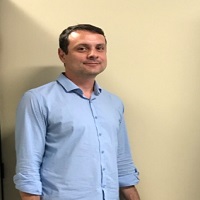
Valber Pedrosa
Sao Paulo State University, Brazil,
Title: Development of microfluidic device for cell monitoring circulating tumors using gold nanoparticles
Biography
Biography: Valber Pedrosa
Abstract
Cancer is an abnormal cell growth that has the potential to metastasize to other parts of the body, ultimately leading to death. Development of treatment resistance further reduces the chance of survival. While biopsy of the primary tumor can predict resistance, heterogeneity of tumor cells can result in non-detected subclones or mutations. An alternative to biopsy is to use circulating tumor cells (CTCs). Studies suggest that cellular heterogeneity within CTCs reflects the full spectrum of mutations in the primary tumor and metastatic lesions better than a single primary tumor or metastatic biopsy [1]. These cells are formed when a tumor cell detaches from the primary tumor and intravasates into the blood stream.
A typical tumor contains millions of cells that harbor genetic mutations leading them to grow, divide and invade healthy local tissue. However, as the cells proliferate, not all are located in the same space. Some cells separate from edges of a tumor and are carried by the blood or lymphatic system. Monitoring of such cells known as circulating tumor cells has awakened the interest in the biomedical and health areas, as they transmit a wide range of variety of chemical and biological signals that can produce a clinical diagnosis preventive. Therefore, the focus of this project was the development of microfluidic devices that can preserve the sample in its minimally altered state without compromising the performance and viability of CTCs. We will use specific anti-EpCam to capture CTCs where the cellular microenvironment can be precisely defined offering new perspectives on the molecular events of metabolism and the clinical analysis of invasively and accurately.

